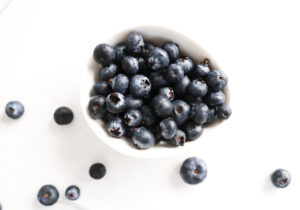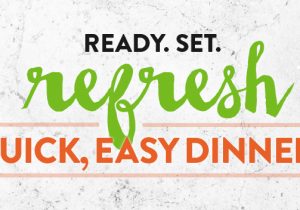
October is Vegetarian Awareness month and it may be a great time to turn over a new leaf and consume more foods that have leaves!
Joking aside, the term plant-based eating has become very trendy. While it doesn’t yet have an official definition, it typically means choosing foods that come from plants to form the basis of your diet. Eating this way (with minimally processed types of food) is generally healthier for longevity and heart health.
Does eating a plant-based diet mean you need to cut out meat completely? Do you need to eat a vegetarian diet? The answer is no to both! Meat and animal products have a lot of nutrients and can definitely fit into healthy diet. However, choosing more plant-based protein choices can add more fibre and may cost less per serving.
Canada’s Food Guide Encourages Plant-Based Choices

In 2019, Canada’s Food Guide was updated. While the recommendation to eat more vegetables and fruits than other types of food has not changed, one major change is a shift from food groups with recommended servings sizes, to a focus of proportions of healthy foods on a plate.
Fill half your plate with vegetables and fruits. The other half is divided in two with one section being whole grain foods and the other being protein foods. Whole grain foods are less processed and have more nutrients (like fibre and antioxidants) than their refined counterparts.
The protein foods group includes plant sources – beans, tofu, legumes, nuts and seeds, as well as animal protein sources such lean meats, eggs, fish and lower fat dairy products. In the updated food guide there is a specific recommendation to choose protein foods from plants more often.
If you are thinking of eating more plant-based foods, treat them like other food choices. If it is highly processed and contains a lot of added salt, saturated fat and/or sugar, it might not be the healthiest choice.
7 Ways to Eat More Plant-Based Foods

- Add extra vegetables to soups, stews and stir-fries to make half of your plate filled with vegetables. Pre-washed lettuce or cut-up vegetables can help to save preparation time if you want to serve salad or raw vegetables with your meals.
- Use less meat in recipes. If you are making lasagna or pasta sauce use half the meat and add roasted vegetables, or cooked drained spinach. This adds more fibre and antioxidants too.
- Commit to a meatless meal (Meatless Monday, Tofu Tuesday) once a week. You can make an omelette for dinner, or use lentils and beans in dishes that usually have meat. Substitute tofu in a stir-fry, or use canned lentils in a pasta sauce instead of ground meat.
- Have a salad as a meal. Whether you make your own salad or get one as take-out, choose toppings like tofu, chickpeas or nuts as a source of plant-based protein.
- Cut back on meat portions. For example, when you serve steak, does each person get their own 8 oz (240 g) steak? Two people can share that steak. And then fill out your plate using the Canada’s Food Guide snapshot as a guide.
- Enjoy a variety of whole grain foods. They are super tasty and have unique flavours. Try barley, bulgur, buckwheat, millet, farro and quinoa. Many come pre-cooked and ready to use in casseroles, soups and grain salads.
- Make your own plant-based burgers. Black beans and cooked brown rice pair together well to replace ground beef in traditional burger recipes.

Check Out These Websites for More Plant-Based Eating Ideas and Recipes
Oldways: https://oldwayspt.org/recipes
Cookspiration: https://www.cookspiration.com
Pulse Canada: http://www.pulsecanada.com/resources/
Whole Grains Council: https://wholegrainscouncil.org
Health Canada: https://food-guide.canada.ca/en/
A great way to learn more about plant-based eating is to attend a Nutrition Tour at your local Save-On-Foods. Registered Dietitians will guide a group of 7 or more through the store and answer questions about label-reading, healthy eating and much more. Visit www.saveonfoods.com/nutrition-tours to request a tour.

Karol is a registered dietitian and conducts Nutrition Tours at Save-On-Foods stores in the Edmonton area. She specializes in nutrition communications and has expertise and interest in performance nutrition. Karol holds a diploma in public relations, a nutrition coaching certification, and is a certified sports nutritionist with the International Society of Sports Nutrition. While she enjoys sharing the latest exciting nutrition science, what Karol loves most about being a dietitian is helping people realize that following basic eating principles can have such a big impact on their health and performance. To stay active, Karol loves weightlifting, boxing and chopping vegetables.
TW: :@karolinayeg

 Share This Post
Share This Post








